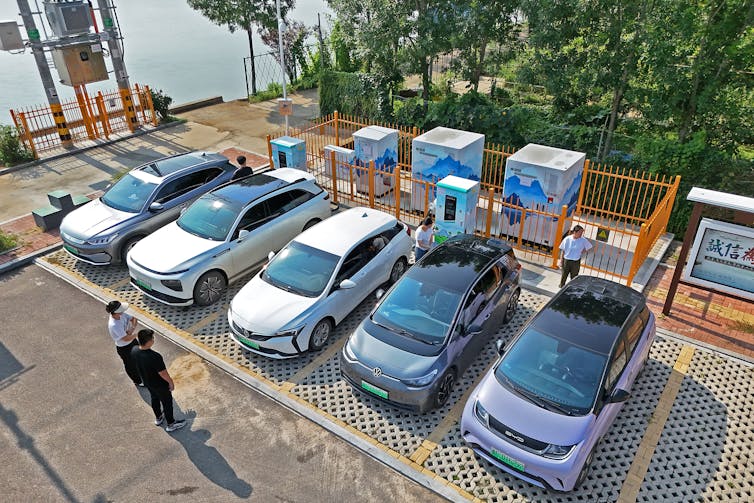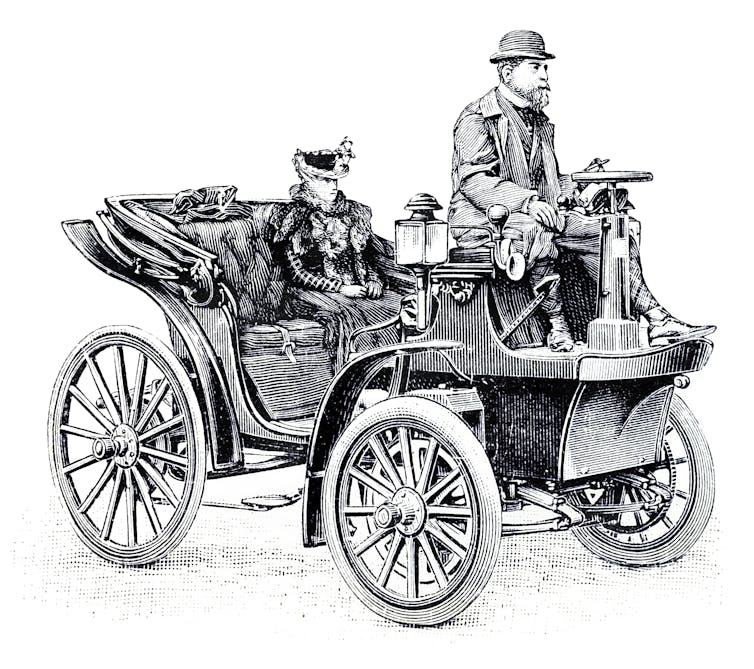Source: The Conversation (Au and NZ) – By Richard Meade, Senior Research Fellow in Economics and Social Sciences, Auckland University of Technology, and Adjunct Associate Professor, Centre for Applied Energy Economics and Policy Research, Griffith University

Like the petroleum industry itself, households are heavily invested in existing transport technologies. Getting oil and gas companies – and consumers – to switch to zero-emissions transport is a huge challenge.
We can’t presume battery electric vehicles (EVs) will displace fossil fuel vehicles any time soon. They are not accessible to most households and don’t offer radically better transport services. They drive on the same congested roads with the same speed limits.
On the supply side, electrifying entire transport fleets requires major infrastructure expansions. Even with strong demand, such infrastructures will struggle to displace Big Oil’s dominant and affordable alternative.
It’s a classic chicken-and-egg predicament. Consumers and vehicle makers won’t switch unless they are confident the required refuelling infrastructures will be available. But those infrastructures won’t materialise without sufficient demand.
Repurposing existing infrastructure to supply clean fuels could convince both consumers and vehicle manufacturers to make the switch. But what would that take?
Clean fuel alternatives
Major economies (including the United States, European Union and Japan) and car manufacturers, such as Toyota and BMW, are actively promoting clean hydrogen-based technologies such as hydrogen fuel cell vehicles. Toyota and some heavy vehicle manufacturers are also investing in vehicles that could combust clean hydrogen.
Whether “green hydrogen” might work for mass transport remains hotly debated. But it’s not the only possibility – biofuels made from renewable feedstocks have the potential to at least partly decarbonise transport (especially aviation).
And so‑called “drop-in fuels” could also substitute for fossil fuels. Known as e‑fuels, these are synthetic fuels made by combining hydrogen with carbon dioxide.
As such they could decarbonise transport faster and more widely because they can be used in existing vehicles – and supplied via existing infrastructures. A recent EU ban on new fossil fuel vehicle sales from 2035 was softened to allow for this.
As with EVs, vehicles running on clean hydrogen, biofuels or e‑fuels don’t revolutionise transport beyond reducing emissions. But they might get a head start on EVs by solving that chicken-and-egg problem: making possible the conversion of entire vehicle fleets to run on clean fuels, while developing the required refuelling infrastructures.

Affordability and scale
Repurposing existing fossil fuel infrastructures to supply clean fuels could be faster and cheaper than building new ones, such as the massively expanded electricity systems required for mass EV adoption.
For example, zero-emissions hydrogen can be produced from natural gas, but the process itself produces greenhouse gas emissions. Carbon capture storage (CCS) – removing the emissions and storing them securely in geological structures such as depleted gas fields – is one possible solution.
The Intergovernmental Panel on Climate Change sees CCS as feasible and playing a significant role in reducing greenhouse emissions. This would mean oil companies could adapt to producing zero-emissions hydrogen while renewable hydrogen or e‑fuel production develops.
The required geological structures are located near oil and gas infrastructures, which could also be converted to transport the resulting clean fuels.
These technologies might not yet be economically viable. But the same was true of EVs only 20 years ago. Concerted investment – and production at scale – was pivotal in improving their economics.
Repurposing fossil fuel infrastructures also opens the door to converting existing vehicles to run on clean fuels. This requires little or no modification for drop-in fuels, which are substitutable for existing fuels by design. Alternatively, vehicles can be converted to combust clean hydrogen (or dual fuel mixtures).
This could be much more affordable – and attractive to vehicle owners – than buying new vehicles (even assuming suitable options were available).
Putting coal out of business
In the process, Big Oil could avoid its existing assets becoming sunset investments. Critically, it could also profit from repurposing its infrastructures, by decarbonising sectors currently dominated by the other major carbon polluter, coal.
For example, hydrogen is a more credible substitute than electrification in some large coal-consuming industries, such as steelmaking.
However, given the need for scale and co‑ordination, it’s unlikely individual oil and gas companies could profitably repurpose their infrastructures on their own.
But industry-wide agreement and co‑ordination to produce a particular clean energy (or mix of energies) could substantially reduce investment risks. Laws against collusion would likely prohibit such agreements, so targeted exemptions and close regulatory oversight would be needed.
Relatedly, firms might commit to accelerating the green transition in return for regulated – but guaranteed – rates of return. While not perfect, this strategy has a precedent in the way competing US electricity utilities became regulated monopolies.
Alternatively, franchise bidding could see firms pay to win a time-limited monopoly to achieve an accelerated green transition.
This has been used to support the rollout of other natural monopoly infrastructures such as water networks, toll roads, cable TV and fibre broadband. It creates a contest that Big Oil couldn’t afford to lose.

Getty Images
Repurposing the past
History offers relevant lessons. EVs were once a dominant automobile technology over a century ago. But they were quickly displaced with the arrival of affordable and convenient fossil fuel vehicles.
Emerging clean fuels hold the promise of fast refuelling and long ranges, combined with zero emissions, meaning the days of EVs could again be numbered.
Recall, too, that 19th-century investors accelerated the transition to rail by buying canals that competed with trains. They then either retired them or repurposed them as rail routes.
Had those investors anticipated motorised vehicles and roads displacing rail, they likely would have invested less. That they didn’t means current generations benefit from access to more railways than would otherwise be available.
The same is potentially true for the fossil fuel industry. Past investment in polluting infrastructures could benefit current and future generations if repurposing those infrastructures accelerates the green transition.
![]()
Richard Meade does not work for, consult, own shares in or receive funding from any company or organisation that would benefit from this article, and has disclosed no relevant affiliations beyond their academic appointment.
– ref. What if Big Oil championed – and profited from – the green transition? Here’s how it could work – https://theconversation.com/what-if-big-oil-championed-and-profited-from-the-green-transition-heres-how-it-could-work-236232







